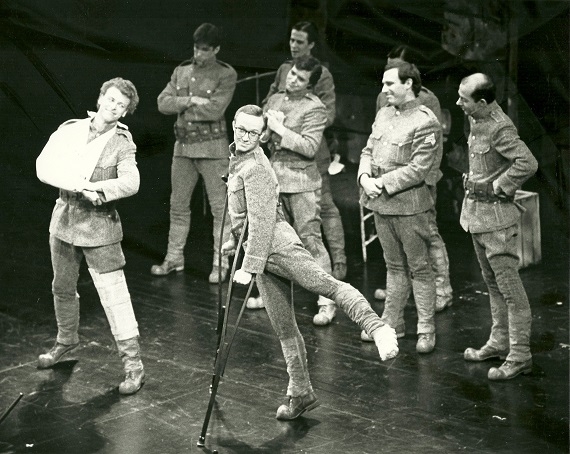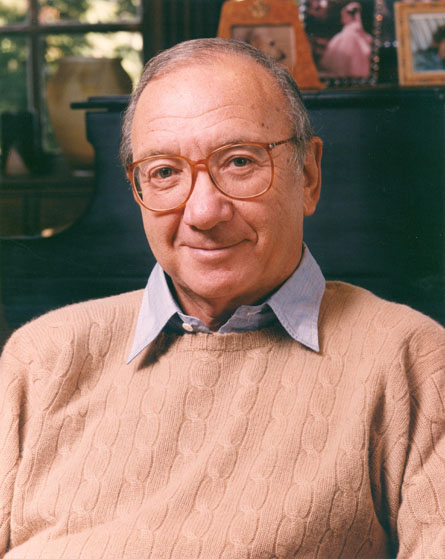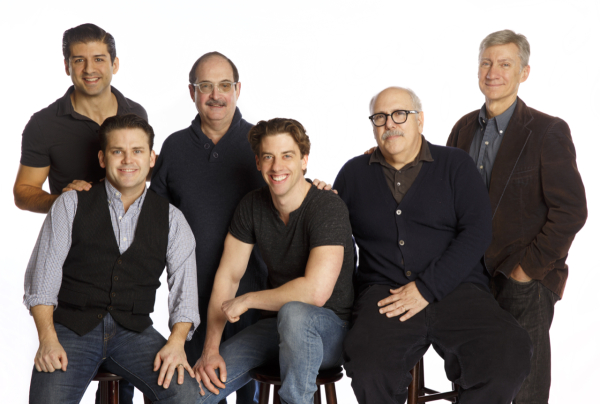"Bob Fosse, Little Me, and Me"

(© Martha Swope)
When City Center Encores! opens its revival of Little Me on February 5, it will be the fourth time the show has played a major New York venue. There was the original 1962 Broadway production that starred Sid Caesar in seven different roles, and Martin Short did the 1999 Roundabout Theatre Company revival. That production was actually the second of Little Me's revivals. The first — the one no one talks about — opened in 1982 and gave me both my first Broadway show and an opportunity to be a Bob Fosse dancer.
Fosse had choreographed and codirected the original 1962 production, which featured music by Cy Coleman, lyrics by Carolyn Leigh, and a book by Neil Simon, based on Patrick Dennis' satire of tell-all star autobiographies. The "Little Me" of the title was Belle Poitrine, a poor girl who rose to fame as a stage and screen star based on her prodigious figure. Little Me was a true musical comedy — but it was only a moderate success during its 1962-'63 run. Nevertheless, Fosse earned one of his nine Tony Awards for his satiric comic dances like the knock-kneed "The Rich Kids' Rag" and the provocative male striptease "I've Got Your Number."

(© Public Broadcasting Service)
In 1981, Neil Simon decided he wanted to revisit Little Me as a "revisal," with the hope of giving the show another chance. Whatever it was called, the show wasn't playing well in previews. Lack of focus and a sluggish pace were the biggest problems. Choreographer Peter Gennaro's dances might not have been as distinctive as Fosse's originals, but they were well received (Gennaro went on to become the only member of the creative team to receive a Tony Award nomination for Little Me). So it was a surprise when the producers announced that Bob Fosse, who was at the height of his power and influence (Dancin', his three-act all-dancing musical, was in its fourth year on Broadway, and his last film, All That Jazz, had won multiple Oscars), would be coming in to restage his original choreography for "Deep Down Inside," a full-chorus hoedown number in which Belle and the townspeople try to convince the tightfisted local banker, Mr. Pinchley, that he really was good "deep down inside."
There was symmetry to Fosse's return to Little Me, lending a hand to old colleagues including Peter Gennaro (a dancer who had appeared in Fosse's first Broadway musical, The Pajama Game). Gennaro was one of many dancers who built on their work with Fosse to establish careers as star performers and choreographers. It would happen again in this revival with one of Little Me's dancers, a dark-haired beauty named Bebe Neuwirth, who went on to win a Tony Award for her role in the 1986 revival of Fosse's Sweet Charity, making her one of the last of the great Fosse dancers.
As a dancer in Little Me, I had the opportunity to witness the galvanizing effect Fosse had on every department of the production. The cast and crew were at strict attention for his first appearance at the theater. Every member of the cast was warmed up and ready for rehearsal at 10:00 AM. The female dancers even appeared in full hair and makeup and their best audition leotards — I pulled out my best, electric-blue jazz pants for the occasion.
Fosse arrived early, accompanied by a young female assistant who steadily supplied him with cigarettes and black coffee, and by his dance assistant John Sharpe, who had appeared in the original production and had served as Fosse's dance assistant on numerous other shows and films. Fosse worked quickly, teaching steps and creating formations on one side of the stage while Sharpe mirrored his efforts on the other side. Where previously there had been a disconnected quality to this moment in the show, with the chorus standing passively, waiting for its cue to begin dancing, now there was full engagement with the scene's dramatic intent by all performers.
"Deep, Down Inside" was classic Fosse: the angular juxtaposition of bodies, the off-center rhythms, and the Fosse "amoeba" with the full cast in a tight unit at various heights and angles (including some on our backs) traveling across the stage. As we learned the steps, it was thrilling how Fosse effortlessly positioned us to create striking stage pictures. The chorus had originally entered with Belle, and the number started when she got a musical cue and went directly into the song. Now Fosse brought her onstage alone and the music came in under the dialogue. He worked with Mary Gordon Murray, the actress playing Belle, on the intent behind the lyrics, coaching her performance as she started the song in a quieter, more natural style. Next she called the chorus to join her, and Fosse staged us in one large group entering from the wings in super-fast cartoon style, instantly establishing the number's mood and movement style. When the dancing began, it flowed naturally from the action. The steps weren't technically difficult, but they required speed, coordination, and the ability to work together as a seamless unit.

(© Max Vadukul)
The number took on a delicious theatricality, most cleverly when the chorus crawled on our stomachs toward the lip of the stage, singing (in increasingly lower tones), "deep, deep, deep, deep, deep…" Our heads were finally lowered, looking directly down into the orchestra pit, and then — wham — on the downbeat, we snapped up, exclaiming "deep down inside!"
Fosse's direction was always grounded in reality and "Deep, Down Inside" became an ingeniously staged production number that grew organically out of the story. Fosse worked with us several mornings over the course of a week. For those of us who, for this short time, got to call ourselves Fosse dancers, the experience left a tremendous impression. He brought a director's eye to staging dance, and demanded the same dramatic intent from the dancers as from the actors.
Alas, one Fosse number couldn't keep this Little Me from being a disappointment. As the reviews arrived on opening night, it was clear that Little Me 2.0 wasn't going to make it and we ended up closing after 36 performances.
Of course, Fosse's theatrical vision has never lost its potency. Chicago, revived on Broadway in 1996 and choreographed "in the style of Bob Fosse," is now the longest-running American musical in Broadway history. (Like the 2014 Little Me, that production began at Encores!) More than 25 years after his death, Fosse's style continues to define Broadway dance. Currently, the (Gwen) Verdon-Fosse Estate is pairing Fosse veterans with a new generation of Broadway dancers. These young people are learning his key works from those who are Fosse's primary source material — the dancers who hold within their bodies his unique choreographic vocabulary. It was my good fortune to experience up close — if only for a brief moment — the singular artistry that marked Bob Fosse as the master of Broadway musicals and made my experience working on Little Me such joyous fun.

(© Joan Marcus)










